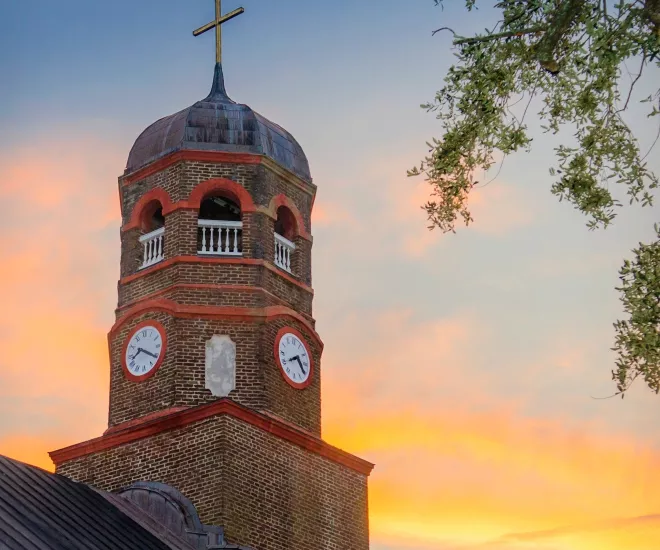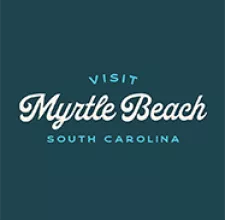A First Lady's Ancestry Rooted in The Grand Strand

Georgetown holds true to Michelle Obama
Michelle Obama grew up in Chicago, but would travel with her family to Georgetown, South Carolina (https://www.historicgeorgetownsc.com/), each summer to visit her grandparents and other extended family members. Her dad’s parents were originally from Georgetown, but moved to Chicago in the 1930s when Georgetown’s economy offered few opportunities. It was up there that her dad was born, grew up, got married, and raised his own family.
The former first lady who graduated from Princeton and Harvard Law, has written two bestselling books and won two Grammy's, had a good upbringing. She said that she and her brother, Craig, would talk with their parents about almost everything, but they never talked about their family history that was rooted in Georgetown County.
On those family vacations, she was relatively near where her ancestors would have lived and worked during a time of slavery, but it just wasn’t a topic that was ever broached. She told The Washington Post in an interview that, “A lot of times these stories get buried, because sometimes the pain of them makes it hard to want to remember.”
She didn’t discover the details of her heritage until her husband was running for president for the first time. His campaign committee hired a research group called Lowcountry Africana (https://lowcountryafricana.com/) to trace her genealogy. The group focuses on, as they explain it, “the family and cultural heritage of African Americans in the historic rice-growing areas of South Carolina, Georgia and extreme northeastern Florida.”
It was they who found that her great great grandfather was Jim Robinson of Friendfield Plantation. He was born into slavery around 1850 and became emancipated when he was a teenager. He married his wife, Louiser, around 1869, and passed away at some point after 1880. As is common in much of African American historical research, records are scant at best.
The most illuminating document in the search was the 1880 census. It gave the estimated year of his birth and noted that his parents were born in South Carolina as well. At the time of the census, he and Louiser already had three children, two boys and a girl, whose ages were one, two and three. The son who would become Michelle Robinson Obama’s great grandfather wasn’t born yet.
Jim Robinson was listed as a farmer and Louiser’s vocation was “keeping house.” Neither, according to this record, were literate. Either this document or other records from that time showed that he remained at Friendfield as a sharecropper in the rice fields after the Civil War. Friendfield, compared to other plantations in the region, did better than most. The resumption of rice cultivation and the growing of other crops happened relatively quickly. So Jim would have had work to do. Production reached moderate levels by the 1870s, but then it began to decline without ever fully recovering. The Robinson family would have ridden that wave of initial but diminishing success. While some may have moved on, there is indication that members of the family were still living at Friendfield well into the first two decades of the twentieth century.
Jim and his wife raised their family in what had been quarters for enslaved workers. It is possible that he lived in the same home for a lifetime. Of the three cemeteries on the grounds that made up Friendfield Plantation, it is believed that Jim Robinson is buried in one of them, or nearby, in an unmarked or perhaps a no longer recognizably marked grave.
Today, six whitewashed cabins still remain on the property. They would have been only a few of the many that would have each housed possibly more than one family as the number of workers ranged from 200 to 500 throughout the plantation's history. As more wealth was accrued, more manpower was acquired and more quarters were built. Some date from the 1840s and others were constructed twenty years before.
While Friendfield Plantation is privately owned and not open to the public, the following are places where Grand Strand visitors can go to see actual cabins or the sites, and possibly the remains of cabins, where enslaved Africans once lived. Each has either guided or self-guided tours providing a wealth of information about the history of each of these former working plantations.
BROOKGREEN GARDENS’ LOWCOUNTRY TRAIL SELF-GUIDED TOUR
(https://www.brookgreen.org/lowcountry-trail)
SEASONAL AFRICAN AMERICAN CEMETERIES TOUR AT BROOKGREEN GARDENS
(https://www.brookgreen.org/low-country-history)
1931 Brookgreen Garden Drive, Murrells Inlet, SC 29576
Brookgreen Gardens has a lot to offer when it comes to African American history. With your general admission ticket, you have access to the Lowcountry Trail. Follow a boardwalk that overlooks a former rice field on one side and the foundations of buildings on the other where enslaved Africans once lived. At each station, you can read about and listen to an audio presentation of what it was like prior to the Civil War to work and live there.
The audio portions are narrated by Ron Daise who, along with his wife Natalie, starred in the hit children’s television series of the 1990s on Nickelodeon, Gullah Gullah Island. Ron had been the Vice President for Creative Education at Brookgreen when those recordings were made.
In the late winter and early spring months, watch Brookgreen’s website and social media to see announcements for the brief, annual series called the Silent Cities Cemetery Tour. It includes stops at and a guided walking tour through African American cemeteries in otherwise inaccessible parts of the gardens’ property. However, guests need to take an open-air vehicle over sometimes very bumpy roads that is not suitable for those with back problems or other medical conditions that could be bothered by the ride.
HOBCAW BARONY’S FRIENDFIELD VILLAGE
(https://hobcawbarony.org/visit/)
22 Hobcaw Rd, Georgetown, SC 29440
Friendfield Village at Hobcaw Barony is said to be the area’s last 19th century village where enslaved Africans once lived. Visitors ride through the village on the standard two-hour tour of Hobcaw Barony which includes the main house that was built in the early 20th century to replace the original dwelling that burned down on that site. Monitor their website for special events at Friendfield Village that allow participants to access the cabins.
HOPSEWEE PLANTATION TOUR AND GULLAH GEECHEE PRESENTATIONS
(https://hopsewee.com/tour-historic-southern-plantation.html)
494 Hopsewee Road, Georgetown, SC 29440
Tour Hopsewee Plantation that includes gorgeous grounds, the main house, and two original cabins in which enslaved workers lived. Thomas Lynch, Jr., who signed the Declaration of Independence, was born at Hopsewee. The home and grounds are open Tuesday through Saturday from 10 AM to 3 PM. Lunch is available at their River Oak Cottage those days from 11:00 to 3:00. Reservations are recommended.
HAMPTON PLANTATION STATE HISTORIC SITE’S ENSLAVED COMMUNITY TRAIL
(https://southcarolinaparks.com/hampton)
1950 Rutledge Road, McClellanville, SC 29458
During the 18th and 19th centuries, it is estimated that, at any one time, as many as 100 enslaved Africans lived and worked at Hampton Plantation. They would have been there in 1791, when the most famous visitor arrived, President George Washington. The cabins in which they lived no longer exist, but the results of archeological efforts are displayed along the Enslaved Community Trail with historical markers that give insight into what has been found and what life was like when the dwellings were there. Elsewhere on the property of this state park, there is a replica of a rice trunk, the crucial mechanism used to regulate the water coming into and out of the rice fields. There are other markers that explain the various jobs that were carried out on the plantation. In addition, along a boardwalk that takes visitors out over a creek, there is historical commentary on some of the enslaved who used those marshy waters as a route to freedom.
